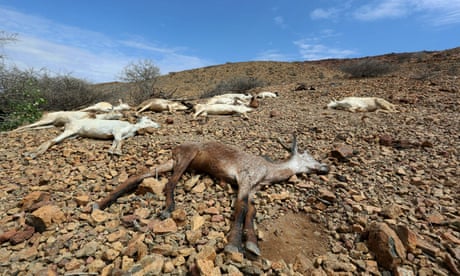South Asia's Groundwater Too Contaminated to Use
Published on by Sean Furey, Water & Sanitation Specialist at Skat Consulting in Academic
Sixty percent of the groundwater in a river basin supporting more than 750 million people in Pakistan, India, Nepal and Bangladesh is not drinkable or usable for irrigation.
 “The two main concerns are salinity and arsenic,” the authors of the study wrote.
“The two main concerns are salinity and arsenic,” the authors of the study wrote.
Up to a depth of 200m (650ft), some 23% of the groundwater stored in the basin is too salty, and about 37% “is affected by arsenic at toxic concentrations”, they said.
The Indo-Gangetic basin accounts for about a quarter of the global extraction of groundwater – freshwater which is stored underground in crevices and spaces in soil or rock, fed by rivers and rainfall.
Fifteen to twenty million wells extract water from the basin every year amid growing concerns about depletion.
The new study – based on local records of groundwater levels and quality from 2000 to 2012 – found that the water table was in fact stable or rising across about 70% of the aquifer.
It was found to be falling in the other 30%, mainly near highly populated areas.
Groundwater can become salty through natural and manmade causes, including inefficient farmland irrigation and poor drainage.
Arsenic, too, is naturally present, but levels are exacerbated by use of fertilisers and mining.
Arsenic poisoning of drinking water is a major problem in the region.
Source: The Guardian
Media
Taxonomy
- Public Health
- Water Pollution Control
- India
- Pollution
6 Comments
-
If that is all that severe conditions Ganges river water and ground water in this area. There is no use anymore we separate source of water comes from; groundwater, surface water and wastewater. More safely and efficiently if the method of processing the water back to the natural concept. Very long and winding path if we use modern methods such as RO, UF or nano technology in water treatment are so expensive. If there is a cheaper, why should use the more expensive. See olso my Google+ by typing "Nasrul Isa"
-
Totally true. Ground Water in India is totally unsafe for drinking, irrigation due to continuous contamination from high end pesticide being used for agriculture, industrial disposal, arsenic exposure. The recent drive of providing soak pit for the latrines being constructed in rural India will add to epidemic within next two to three years. The best way is to use surface water, which is scare. Do not depend on Government, each local body must develop capabilities to store the surface water and take measures to maintain its quality.
-
According to my experiences with arsenic contents along the Ganga, I can say, that from a certain depth on -increasing depth from West to East- the groundwater is arsenic-free. The depth is best / easiest determined by an old land-surface about 12 000 years old and identifiable by reddish sediments coming up when drilling beyond 50 meters or so. The water below is older, than 12 000 years and the aesenic has been washed out, so the water ist safe for drinking. Problem is the poor quality delivered by local enterprises who do not use modern equipment and are thus inapt to install a safe hydraulic bull plug between the surface-near water and the deeper seated arsenic-free water. The use of bad casing, gravel pack etc. are another deficit. A hydrogeological survey would be needed to identify the extension of the "good" and "bad" groundwater and the separating layers of old continental surface. Thereupon, we'd need standards about building safe wells and then - just putting the norms into gear, administratively and otherwise.
-
I fully agree with above statement and studies. What are the alternatives remaining we have for drinking, irrigation and other purposes? Can we remove those contaminated elements from our vast Indo-Gangetic Basin effectively and economically? If not we have to see other alternatives such as surface water, atmospheric vapour, rain-harvesting or creating artificial hydrological cycle from the vast Sea water. Our surface water, atmospheric water, ground water is also getting depleted and polluted and becoming scarce now a days. Therefore, we need to think other alternative also for our future needs.
-
60% IS A LOW FIGURE. Some reports say, almost 90% ground water in North including Indo-gang etic belt is not potable water. Deep percolation of contaminants and pollutants entering the surface waters is a real fact for which no one seems to be held accountable.
-
Living with Water & Building with Nature, we call it water management an awareness, again one of the main reasons - MAN-MADE CAUSES, a very serious structural attitude issue, a government responsibility to take the lead.